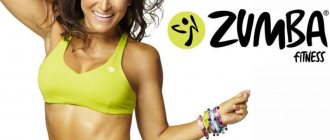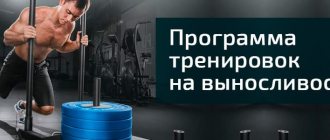Water aerobics is a form of fitness that is quite popular among lovers of water activities of any age. Aquafitness is the least traumatic type of exercise and has fewer contraindications, however, they still exist. Next, we will consider the advantages, contraindications to exercise, and a set of exercises in water. If regular swimming is not interesting to you, and strength training is contraindicated, then water aerobics is an ideal option for interesting and safe activities.
The benefits of water aerobics
- Exercising in water reduces the load on the spine, which allows everyone to train without experiencing pressure and shock load on the joints.
- The workouts are safer, unlike other types of fitness.
- Exercising in water allows you to train the main muscle groups, strengthening the muscle corset, improving posture, reducing the symptoms and manifestations of spinal diseases - osteochondrosis, protrusions, pinched nerve endings, scoliosis.
- Training increases the flexibility of muscles and ligaments, as well as joint mobility.
- Water loads help harden the body.
- Promotes weight loss, burning adipose tissue, improving skin tone.
- Increases the overall endurance of the body.
- Strengthens the cardiovascular system, improves blood circulation.
- Calms the nervous system, relieving muscle and emotional stress.
The main reasons to start doing water aerobics
Because water aerobics involves full-body exercise based on natural movement, it can have an extremely positive impact on overall fitness and health.
- Water aerobics is 100% safe - Water aerobics is a low impact exercise. The viscosity of water provides greater resistance than air, allowing you to train at high intensity but with less physical impact on the body. The buoyancy of water allows you to move more easily, with less stress on your muscles and joints. This means that the risk of injury during exercise is virtually zero.
- Improve psycho-emotional state - Systematic exercises reduce symptoms of depression and stress, improve sleep, and also increase the level of attention in children suffering from ADHD.
- Water aerobics is a great way to lose weight - By exercising in water, you can easily burn 500-1000 calories per hour. Additionally, water naturally massages and tones your muscles during exercise.
- Exercise increases physical endurance. During training, every movement forces the muscles to “fight” the resistance of the water. It increases physical endurance and strengthens muscles. Staying underwater helps your lungs stay healthy. This is especially useful for people suffering from respiratory diseases.
- Water aerobics keeps your heart healthy - When exercising in a pool, as you increase the amplitude and speed of your movements, your heart rate, although it will increase, will be about 10-20% lower than when performing similar exercises on land. Water pressure allows blood to circulate more efficiently throughout the body, reducing the strain on the heart.
In addition to these reasons, training in water is an excellent way to diversify your leisure time, improve your mood and be physically active at any time of the year.
A set of water aerobics exercises
Water aerobics classes are usually conducted in moderately shallow water. To practice this type of fitness, you do not need to be an experienced swimmer. The workout is preceded by a short warm-up to prepare the muscles.
A typical water aerobics class includes the following exercises:
- for balance;
- for coordination;
- for stretching;
- cardio designed to improve blood circulation (jogging in water, twisting the body, kicking, stretching the arms).
At the end of the lesson, to prevent painful sensations, a cool-down is necessary - performing joint stretches.
Depending on the fitness goals that the athlete sets for himself, as well as based on his level of training, the water aerobics coach creates a specific exercise program.
Types of water aerobics
- Wellness – a load aimed at improving the general condition of the body and its functions, improving the condition of the nervous system.
- Sports – designed to train professional athletes to improve coordination, strength and endurance.
- Applied – promotes relaxation, reduction of physical and emotional stress for certain professions associated with heavy physical labor.
- Therapeutic – aimed at the general improvement of the body in case of dysfunction of the musculoskeletal system, as well as obesity.
There are also the following types of water aerobics:
- Aqua-Beginners – classes for beginners.
- Aqua-Box – with elements of martial arts for a high level of physical fitness.
- Aqua-Circuit – circuit classes in water with various equipment.
- Aqua-Cycle – cycling in water.
- Aqua-Interval is a high-intensity exercise to strengthen the cardiovascular system.
- Aqua-Resist – loads with special equipment.
- Aqua-Strength – high-intensity power loads.
- Aqua-Stretch – stretching under water.
- Aqua-Team – classes in pairs.
- Water aerobics for pregnant women.
- Running Men - interval training, including running underwater and strength exercises with equipment.
- Aquajogging is an imitation of race walking.
Water aerobics: depth of immersion
There are two types of aqua lessons. “Shallow water” training is a pool that is deep enough where you can touch the bottom and use it for exercise (e.g. pushing off from it). People with asthma need to exercise in “shallow water”, as hydrostatic pressure can make it difficult for them to breathe. The same applies to those who have osteochondrosis of the cervical spine accompanied by vascular insufficiency, which manifests itself in dizziness, nausea, and unsteady gait.
“Deep water” is a pool with a depth of 2 m, where you cannot reach the bottom without diving headlong. This is the most common type of water aerobics in fitness clubs and regular swimming pools.
On average, aqua training consumes from 400 to 600 kcal per hour - depending on the intensity of the lesson you came to. They are divided into 3 levels: for beginners, advanced and advanced.
Equipment for water aerobics classes
- Aqua belt - designed to keep the body afloat, worn on the chest.
- Weights for arms and legs are special waterproof cuffs that increase resistance for training various muscles.
- Aqua gloves are special gloves with membranes to increase water resistance when swimming.
- Aqua fins for arms and legs are devices for increasing the load on the shoulder girdle and legs.
- Sandals - designed to train balance, coordination and strengthen the muscles of the lower body.
- Noodles are flexible poles designed to maintain balance in the water, as well as to perform exercises on different muscle groups.
- Band expanders are special rubber bands to increase the load on the muscles.
- Platform - to improve coordination, endurance, has a non-slip surface and sometimes massage.
- Gymnastic balls are about 17 cm in diameter, designed for performing various exercises, and are highly buoyant.
- Dumbbells are special equipment for training in water; they balance the level of resistance.
- A kolobaska is a figure-of-eight device for holding with your legs, with the help of which the work of your legs is turned off, allowing you to work only with your shoulder girdle when swimming.
- Aqua disc - equipment for working out the upper body, to increase endurance, strength and flexibility.
- Aquaboxing paddle is a device for optimal resistance, improving coordination and load when practicing movements in water.
What does it look like
The training begins with the simplest exercises, which become more complex with each session. To ensure that all group members work with equal efficiency, time is specially allocated for individual work and error correction. Warm-up, as well as subsequent main exercises, is carried out in the pool. The most important element of warm-up is breathing exercises.
The program usually also includes flexibility exercises. If you are a beginner, then at first your best exercises are walking in water, swinging your arms and legs, running, learning the correct technique for all kinds of exercises and dance movements. Each time your classes will become more intense, interesting and as useful as possible.
A set of water aerobics exercises
This complex is more suitable for beginners and is performed without special equipment. All movements are elementary and familiar from school exercises.
- Run in water with high knees for 15 minutes.
- Lifting the legs - alternately alternating swings under water in different directions, 15 times on each leg and side.
- Raise your knees to your chest – 15-20 times on each leg.
- Twists with jumping - alternating turns of the body for three minutes.
- Body rotations – rotations of the torso with wide stance of the legs in one direction and the other 20 times.
- Figure Eight - movements of the hips imitating the number 8.
- Bringing and spreading your arms in front of you at a fast pace.
- Muscle stretching.
Water aerobics for weight loss
The intensity and layout of the aerobics complex for weight loss should be determined by a personal trainer and carried out under his supervision. We offer 4 universal exercises for any level of training. With their help, you can easily lose weight quickly and without harm to your health. Do 2-3 sets of 10 repetitions.
№1
- Stand so that the water covers your chest. Feet shoulder width apart.
- Start jumping with your knees raised. Try to raise your knees as high as possible.
№2
- Starting position: feet shoulder-width apart, arms with dumbbells along the body.
- Raise the dumbbells as high as possible and then lower them to your hips.
№3
- Stand so that the water covers your shoulders.
- Hold dumbbells in each hand.
- Raise and extend your arms straight out in front of you, then bend your elbows.
№4
- Starting position: arms along the body, legs wider than shoulders.
- Extend your arms with dumbbells to the sides parallel to your shoulders. Then lower them down.
Energy consumption during aqua fitness classes per hour
Depending on your weight and age, as well as your metabolic rate, you can burn from 450 to 700 kcal in an hour of training. Naturally, the more intense the load and level of activity, the more calories you can burn. Thus, classes for beginners will consume less energy than classes using special equipment for a high level of physical fitness.
In general, 700 kcal in 1 hour is a high figure for any type of fitness. But the advantage of water aerobics is that its loads are safer.
With a decrease of more than forty percent of body weight in water, the joints and spine experience less stress, and the muscles, due to the resistance of the water, experience 10-12 times more.
Ways to achieve maximum efficiency
As already mentioned, water aerobics helps you lose weight.
Any exercise that is used to lose weight has some effectiveness if you follow a diet at the same time. It will be possible to lose weight faster if a person accustoms himself to a system of fractional nutrition, which involves eating small portions of food 5-6 times a day. This system stabilizes the digestive system. Frequent meals create a nutrient deficiency in the body, and it does not need to create “winter reserves” in the form of fat deposits.
Since water aerobics for weight loss also requires energy expenditure from the performer (the intensity of the workout is clearly visible in the video lesson), before the lesson it is necessary to include carbohydrates in the menu, which are an excellent source of energy. Otherwise, they will all be processed into subcutaneous fat. The girl measures her waist.
Drinking enough water also helps you lose weight while doing water aerobics exercises. You must drink at least 1.5 liters of water per day.
If you like water aerobics for weight loss, and you are ready to fulfill all the conditions for effective weight loss, do not forget about consuming proteins that help strengthen muscle mass. From protein products, it is necessary to highlight poultry and fish meat, nuts, eggs and other products that are suitable as dinner or lunch.
The effect of water aerobics on weight loss
It has already been stated above that water aerobics is a rather energy-intensive form of fitness. The pressure that water creates increases the load on the muscles, and the massage that provides water pressure makes the skin smoother and fights the manifestations of uneven deposition of adipose tissue - cellulite. Training carried out in cool water increases energy consumption, which means it accelerates the process of burning fat. And this happens because the body spends even more energy to warm itself than in warm water. Thus, the direction is an excellent choice for weight loss goals.
Features and benefits of water aerobics
Today, water aerobics is available to everyone who wants to lose weight and improve their health. The uniqueness of aerobics in water lies in its impact, in the set of exercises and in the equipment used, which is not used anywhere else.
Inventory
Equipment for water aerobics can be anything that keeps a person afloat, for example a special belt, inflatable arm sleeves or a flexible floating pole called a noodle. Aerobics in water helps people who are ashamed of their figure to improve, since water hides movements from prying eyes.
In addition, water aerobics is very good for weight loss and gets rid of cellulite: absolutely all muscles work, blood circulation improves, which helps in the fight against stagnation of lymph and blood. This is what causes the notorious “orange peel”.
Differences between water aerobics and other types of exercise
Of course, the main difference between water aerobics and other types of fitness is that all workouts are performed in a pool of water. This does not mean that you must be able to swim. The special aqua belt that you will be given will support you on the surface. In addition, water aerobics is almost completely non-traumatic.
What can you achieve with aqua training?
The effect of water aerobics is enhanced by additionally overcoming water resistance. Exercising in water strengthens the body, stretches ligaments and muscles, improves flexibility, and burns extra calories.
Since water pressure is 50 times greater than air pressure, each movement made in the water requires much more effort. In addition, the water in the pool has a lower temperature than the temperature of the human body, so the body expends effort, and therefore calories, to keep warm.
Water is also a good massager, extremely beneficial for blood vessels, skin and the entire body as a whole. During classes, there is a constant massage of all internal organs - this helps to remove toxins and waste from the body, metabolism is activated, and your body comes into full tone.











